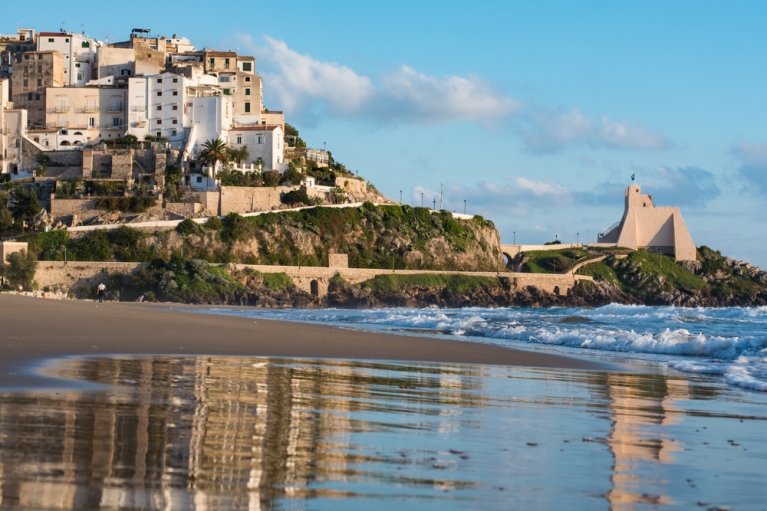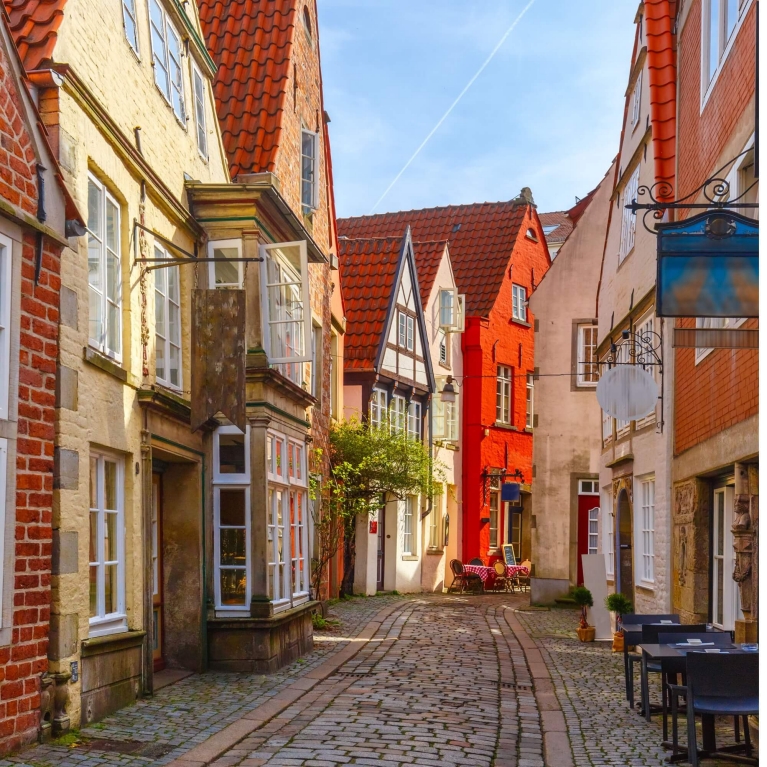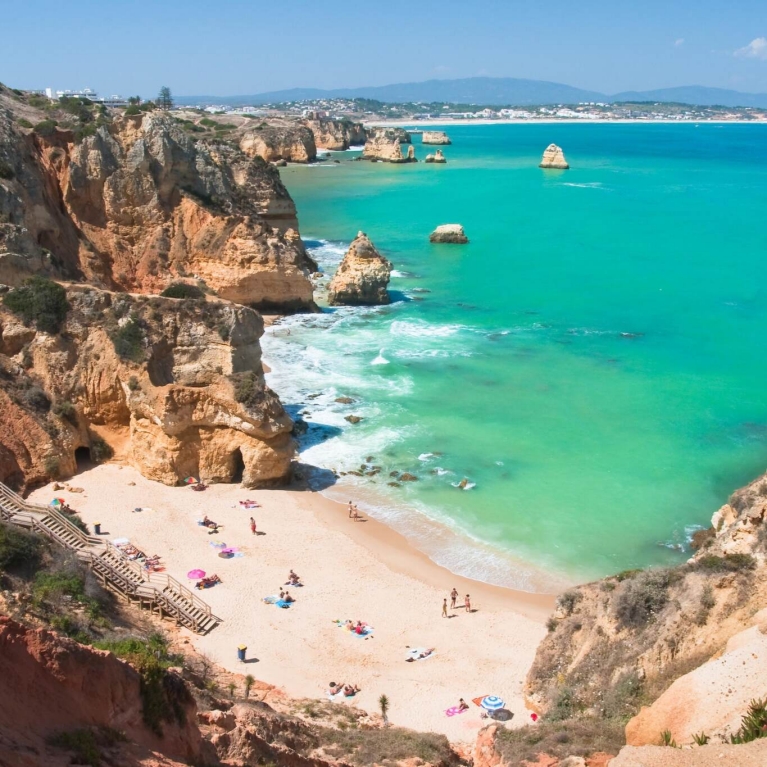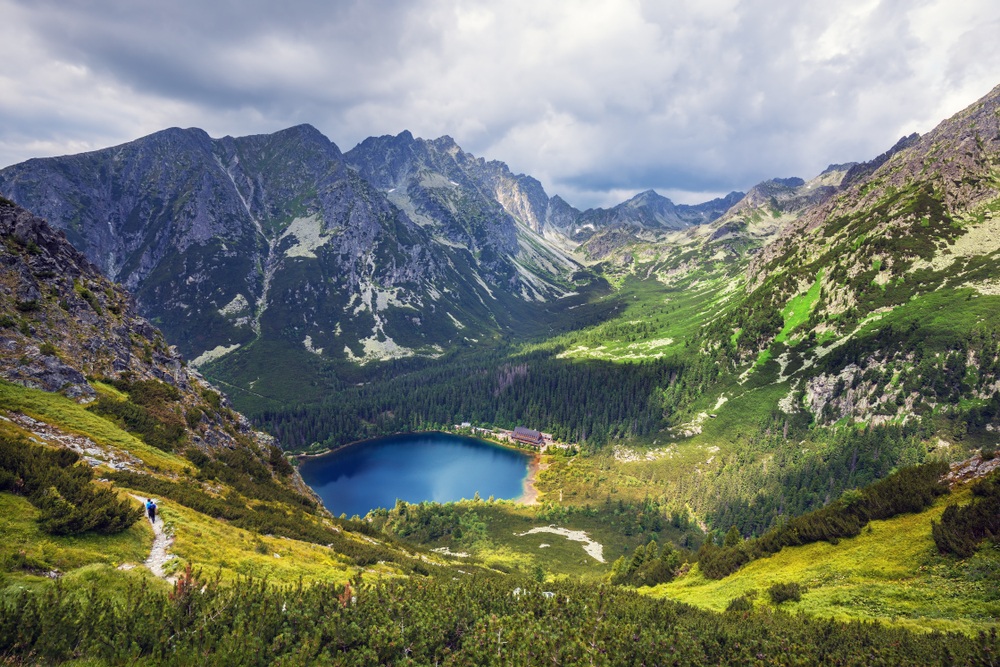
When is the best time to travel in Europe?
Rachel Schnalzer
23 May 2025
Dreaming of your next European adventure? By the time you read this article, you might already have an idea of where you would like to travel. And maybe you even know how you’d like to travel (by train, plane or ferry — or maybe a mix of all three?).
Now, the only question is when.
Before we dive in, I want to quickly dispel the idea that there’s a wrong time to travel in Europe. Sure, if you're hoping to ski in Scandinavia, you should probably not plan a trip to Sweden in July — but in general, I feel confident saying that no matter what time of the year you travel in Europe, you’re bound to have an unforgettable experience.

Sperlonga, in between Rome and Naples, stays warm well into October, making it an ideal place for a post-summer swim.
What are the best months to visit Europe?
Here’s a quick rundown of the busiest — and least hectic — times to travel in Europe.
Let’s start with a basic fact: travel in Europe is booming. An easy way to measure this is by studying “tourism nights” — in other words, the number of nights people spent in tourist accommodations across Europe.
Here are some key numbers:
- According to a report published by the European Union, nights spent in EU tourist accommodations jumped 6.8% from 2022 to 2023, vaulting past pre-pandemic levels.
- In 2023, a whopping one-third of total tourism nights of Europeans were spent in July or August, according to another EU-published report.
- Outside July and August, the numbers drop pretty dramatically – with January and November taking the prize for the least number of nights spent in tourist accommodations across the EU.
The takeaway from all these stats: if you’re particularly crowd-averse, you may want to avoid travelling in Europe in the summer.
But before we take this data and draw the conclusion that travelling to Europe during July and August is inherently bad and travelling during the winter months is good, it’s important to factor in some nuance – and consider the power of getting creative while planning your trips.

According to a report published by the European Union, July and August are the busiest months for tourism across Europe.
How to travel Europe during summer while skipping the crowds
When crowds are at their peak — whether in the middle of July or at a popular Christmas market in December — it's important to make certain adjustments to make sure you don’t spend more time waiting in line than you do making travel memories.
What are the best summer destinations in Europe?
Some European countries suffer from more overtourism in the summer than others. When mapping out your dream train trip, it can help to prioritise visiting countries that aren’t inundated with travellers.
In 2018, the last year this data was collected by the EU, countries including Germany, Poland, Finland, Slovakia, Luxembourg, and North Macedonia were among the EU countries with the lowest net occupancy rates during their peak summer month.
This suggests that, even during these countries’ busiest tourist season, they were the least congested — making them ideal summer destinations for travellers hoping to avoid crowds.

On an Interrail trip to Germany, spend a few days exploring the historic streets of Bremen.
Try out Slow Travel
Finding a summer trip to the Mediterranean coast impossible to resist? When I travel to a place that gets crowded in the summer, I try to embrace Slow Travel as much as possible. I do my best to book locally-owned accommodation in less hectic parts of the destination — for example, opting to stay in Rome’s quiet Prati neighbourhood over the Centro Storico or Trastevere.
Same goes for restaurants and shopping; whenever possible, I skip dining and browsing for souvenirs at a destination’s busiest streets in favour of calmer, less busy areas.
Stretch your summer and travel during September
Lastly, it’s good to think carefully about your travel goals — are you longing for a holiday where you can lay on a beach and spend an afternoon sampling gelato?
If so, stretching your summer holiday and travelling instead in September or October could offer the best of both worlds. Temperatures stay warm enough for swimming and other warm-weather activities long into the autumn months in countries such as Spain, Croatia, Italy, and Bosnia and Herzegovina.
Need some inspiration for a sun-forward trip in Europe during the off-season? Check out our Slow Food itinerary across Greece and Bulgaria and read about my journey to a lesser-visited corner of Portugal. Regardless of when — or where — your travels take you, we hope you enjoy the ride.

Stretch your summer with a September visit to Portugal's Algarve region, where temperatures stay warm long after summer ends.
Change of currency
You cannot change the currency once you have a Pass in your cart. Remove the Pass, and then change the currency on the website header.







